There are 54 species worldwide of marine fishes called the Seahorse belonging to the genus Hippocampus, of which 14 species are known to live in Southeast Asian waters, and 10 species are known to inhabit Philippine waters. “Hippocampus” comes from two ancient Greek words, hippos meaning “horse,” and kampos meaning “sea monster.” The Seahorse has a head and neck with an equine appearance, but the Seahorse has a segmented bony armor, an upright posture, and a curled tail. According to Project Seahorse, the 10 known Seahorse species in the Philippines are: H. barbouri (Barbour’s seahorse), H. bargibanti (Bargibant’s pygmy seahorse), H. comes (Tigertail seahorse), H. denise (Denise’s pygmy seahorse), H. histrix (Thorny seahorse), H. kelloggi (Kellogg’s seahorse), H. kuda (Yellow seahorse), H. pontohi (Pontoh’s pygmy seahorse), H. spinosissimus (Hedgehog seahorse), and H. trimaculatus (Three-spot seahorse).
Habitat. The Seahorse is mainly found in shallow tropical and temperate waters throughout the world, and lives in sheltered areas such as seagrass beds, estuaries, coral reefs, or mangroves. The Seahorse, in most likelihood, would be found resting with their prehensile tail. This means its tail seizes, grasps, or winds around a stationary plant or corral.
Description. In the Philippines, Seahorse heights range from 1.3 cm of the tiny H. severnsi, to 28 cm of the large H. kelloggi (Lourie & Kuiter 2008). The Seahorse has a flexible bent neck, long snouted head, crown-like spine or horn on its head called a Coronet, followed by a trunk and tail. Although the Seahorse is a bony fish, complete with gills, fins, and an exoskeleton, it does not have scales. It has a thin skin stretched over a series of bony plates, which are arranged in rings throughout its body. Its long snout is used to suck up food, and its eyes can move independently of each other. The Seahorse is adroit at camouflage and has the ability to change colors, and grow or reabsorb spiny thorns to blend with their habitat. The pygmy species has a lifespan of about 1 year, while the larger species average between 3-5 years.
According to Project Seahorse, the Seahorses in the Philippines can be broadly grouped as: spiny, smooth, or pygmy.
- Spiny Seahorses. 4 species – H. barbouri, H. histrix, H. comes, H. spinosissimus. H. barbouri is found in Cuyo Island, Zamboanga, Negros Occidental, Malapascua, and Negros Oriental. H. histrix is found in northwestern Bohol, Batangas, Puerto Galera, Tablas Strait, Romblon, Cebu Strait, Negros Oriental, Davao, Iloilo, Puerto Princesa, and Jagna. H. spinosissimus is found in Cavite, Danajon Bank, Puerto Galera, and Malapascua. H. comes is found in northwestern Bohol, Tablas Strait, northern Masbate, Bantayan, Malapascua, Moalboal, Sogod Bay, Negros Oriental, Iloilo, Gingoog Bay, Sama Island, Bien Unido, eastern Samar, Iloilo, Leyte, Masbate, Quezon, Sorsogon, Surigao del Norte, and Zambales.
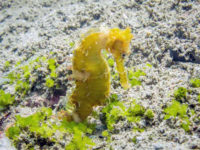
H. barbouri, spiny pygmy, Negros
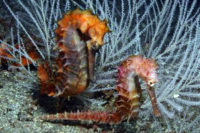
H. histrix, spiny, Romblon
- Smooth Seahorses. 3 species – H. kelloggi, H. kuda, H. trimaculatus. H. kelloggi is found in Bohol, Daanbantayan, Jolo, Negros Oriental. H. kuda is found in Danajon Bank, Aparri, Bantayan Island, Moalboal, Masinloc, Samal Island, Iloilo, Lanao del Norte, Negros Oriental, Puerto Galera, Sarangani, and Zambales. H. trimaculatus is found in Bohol.
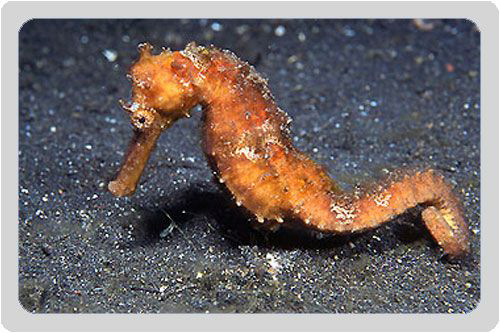
H. spinosissimus, spiny, Bohol
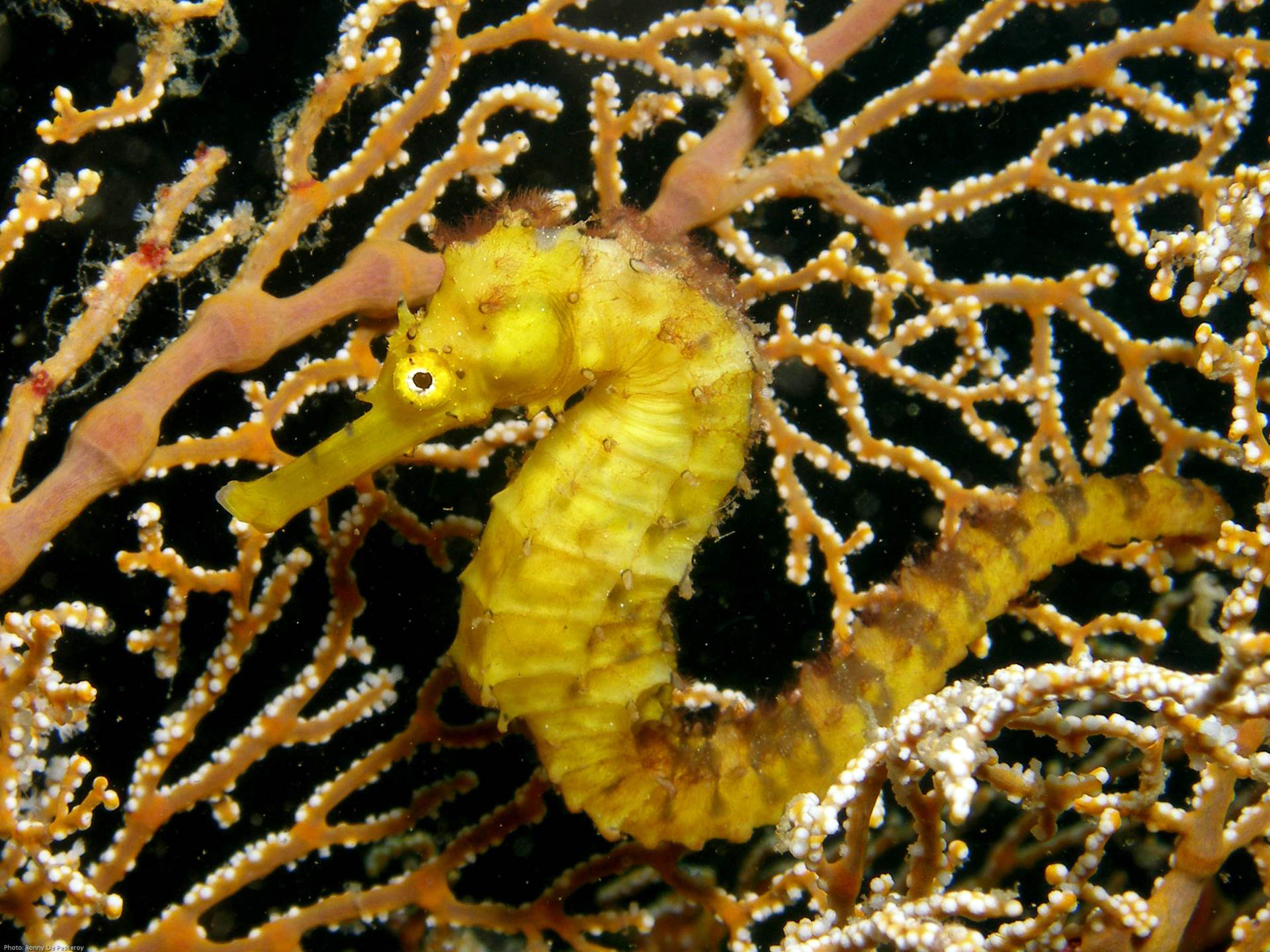
H. comes, spiny tigertail, Gato Island
- Pygmy Seahorses. 3 species – H. bargibanti, H. denise, H. pontohi & severnsi – are so tiny but well camouflaged. H. bargibanti is found in Batangas, Malapascua, Mactan, Anda, Cabilao, Panglao, Samal Island, Puerto Galera, Masbate, Romblon, and Negros Oriental. H. denise is found in Tablas Strait, Romblon Pass, Malapascua, Moalboal, Cebu Strait, Cabilao, Panglao, and Samal Island. H. pontohi & severnsi are found in Romblon and Bohol.

H. bargibanti, pygmy, Malapascua, Cebu
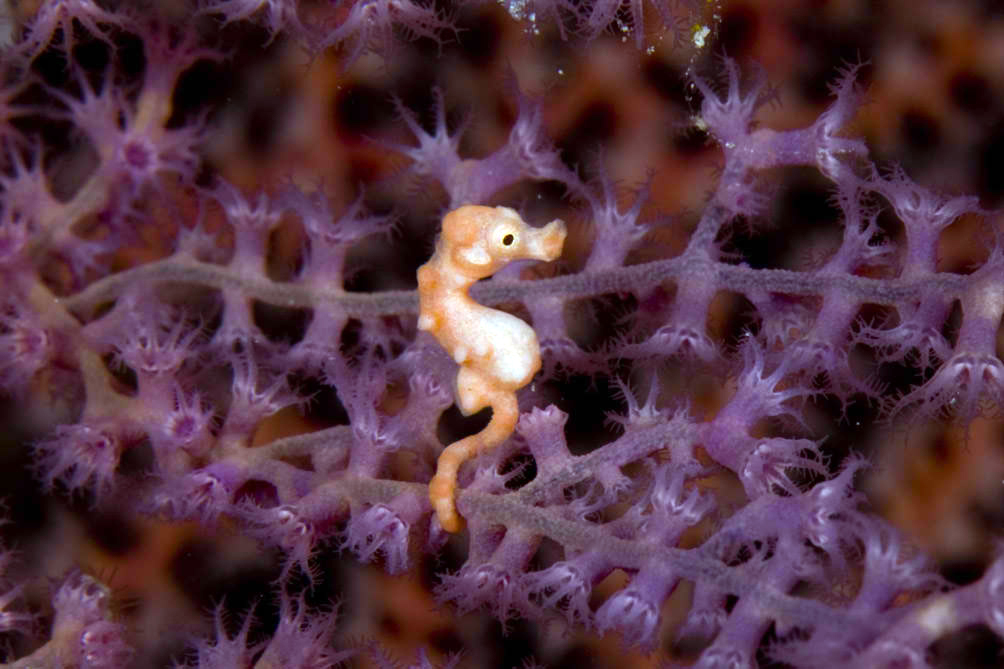
H. denise, pygmy, Tubbataha Reef, Palawan
Latest Discovery. In 2013, two rare Seahorses were discovered near Romblon. These are the Weedy pygmy Seahorse (H. pontohi) and Severn’s pygmy Seahorse (H. severnsi). The Zoological Society of London’s Project Seahorse verified both as the first record of these species in the Philippine waters. However, since they are very similar in features and differ only in color, Project Seahorse therefore considers H. severnsi as a synonym species to H. pontohi. The Weedy pygmy Seahorse is one the smallest Seahorses at 1.4cm, just a tad bigger than Severn’s pygmy Seahorse at 1.3cm, which is smaller than a Peso coin.
Speed. The Seahorse is a poor swimmer. It swims upright, not horizontally like regular fish. The Seahorse propels itself by using its dorsal fin. The pectoral fins, located on either side of its head, are used for maneuvering and steering. The top speed of a Seahorse is .5 mph (2,640 ft/hour). The slowest-moving Seahorse, H. zosterae (Dwarf Seahorse), found in the Bahamas, has a top speed of.0009 mph (5 ft/hour).
Food. The Seahorse relies on stealth to feed on copepods and amphipods, which are small crustaceans, Mysid shrimp, invertebrates, and fish fry. The Seahorse uses “pivot feeding” to catch the prey, which works by rotating its snout at high speed to suck them in. With excellent camouflage, the Seahorse ambushes prey that floats within striking distance. While feeding, it produces a distinctive click each time food is ingested. The same clicks are heard in social interactions.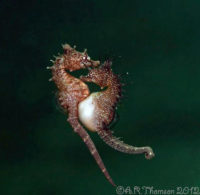
Courtship and Reproduction. Before breeding, Seahorses court for days. They grip a strand of seagrass with their tail, and spin like a carousel. Later, the male pumps water through the egg pouch on his trunk, which expands and opens to display its emptiness. When the female’s eggs reach maturity, she and her mate gracefully spiral above the seagrass. The female swims away and returns the next morning to insert her ovipositor into the male’s pouch and deposits up to 1,500 eggs to be fertilized by his sperm. The male will carry the pups for up to 45 days until they are fully developed. Once the pups are released from the pouch, the male parent’s role is completed but the couple’s relationship is monogamous for life until a partner dies.
Threats. The Seahorses are “threatened by massive lantern fishing,” Angie Nellas of Project Seahorse Foundation (PSF) said. According to Marine Conservation Philippines (MCP), the real threat is the destruction of habitats caused by increased population growth, and the increasing demand for utilization of coastal resources. Coral reefs and seagrass beds are deteriorating, reducing viable habitats for the Seahorse. The study “Tracking the International Trade of Seahorses” (Evanson, et al 2011), finds that Seahorses are heavily traded for traditional Chinese medicinal purposes, acquaria, and souvenirs. About 25% of the world’s Seahorse trade — dried or alive — comes from the Philippines.
Classification. Seven Seahorse species in the Philippines are listed as Vulnerable on the 2017 IUCN Red List of Threatened Species: H. barbouri, H. comes, H. histrix, H. kelloggi, H. kuda, H. spinosissimus, and H. trimaculatus. Three other Seahorse species are listed as Data Deficient, despite heavy exploitation: H. bargibanti, H. denise, and H. pontohi.
Conservation. In support of conservation work by PSF, MCP and Philippine marine parks, BFAR’s goal for implementing the Amended Fisheries Code Sec 102b for Seahorses is by end-2018, with the aim to have legislation in place that should allow for the reopening of sustainable Seahorse fisheries and trades.
